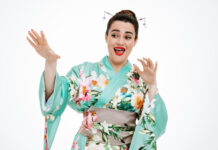The phrase “erotic beauties” has cultural relevance and rich history that goes beyond simple physical appeal. Inspired mankind over millennia, it reflects an exquisite mix of sensuality, confidence, and charm. Whether preserved in modern media, classical paintings, or ancient sculptures, the idea of sensual beauty never fails to enthrall and start conversation about its changing definition.
Interwoven threads in the fabric of human expression are eroticism and beauty. This dynamic interaction has shaped cultural narratives, literature, and art as well as how civilizations view allure and attraction. From the Venus de Milo to contemporary images in movies, the way sensual beauty is portrayed reflects society values and evolving standards. Fundamentally, this theme encourages investigation of the psychological and emotional aspects of desire in addition to the visual ones.
Cultures have always honored the human form and its capacity to tell tales of love, passion, and connection. Through mosaics stressing its symmetry and grace, ancient civilizations such Greece and Rome displayed their respect of the body through sculptures. These pieces of art were representations of intellectual and spiritual ideas in addition to honors to physical form. In Eastern cultures, too, the portrayal of beauty sometimes entwined with spiritual and philosophical ideas shows the holy equilibrium of body and mind.
Today, the concept of sensual beauty has evolved to embrace a more broad definition of attractiveness. The digital era has democratized representation and given venues for many voices to question conventional wisdom. Contemporary art and social media honor uniqueness and challenge limited definitions. This change has encouraged a worldwide respect of many forms of sensuality, therefore enabling individuals to value their own attributes.
Furthermore raising important issues with its marketing is the societal conversation around sensual beauty. In fashion, movies, and advertising, the monetization of attractiveness can support unwarranted expectations. But there’s a growing push to reinterpret these criteria by honoring honesty and subverting negative preconceptions. Self-love and body positivity campaigns are redefining beauty and guiding the story toward a better and more inclusive viewpoint.
Erotic beauty as a notion beyond mere physical qualities. It is closely related to the intellectual and emotional ties strengthening attraction. Often, people’s view and expression of their attractiveness depend much on confidence, intelligence, humor, and compassion. These intangible attributes help to define beauty in a more comprehensive and richer sense than the surface level.
Long-standing media for exploring erotic beauty have been art and literature. < Sensual language, captivating images, and romantic poetry let writers explore ideas of passion and desire. These pieces sometimes catch the fleeting character of attraction and offer understanding of the complexity of personal relationships. From the ageless sonnets of Shakespeare to modern books, narrative nevertheless is a potent weapon for honoring the beauty of connection.
Furthermore, the idea of sensual beauty helps one to value the variety of human experience. It emphasizes how much circumstance, culture, and personal values shape opinions of attractiveness. By appreciating these subtleties, society can help to create a more inclusive and sympathetic knowledge of attraction.
The continuous development of this idea mirrors larger society changes toward more acceptance and value of uniqueness. It honors the human spirit, recognizes the force of connection, and pays respect to the countless ways beauty shows up in our planet. It is still a source of inspiration as we rethink and investigate this concept, igniting imagination and connection wherever.








